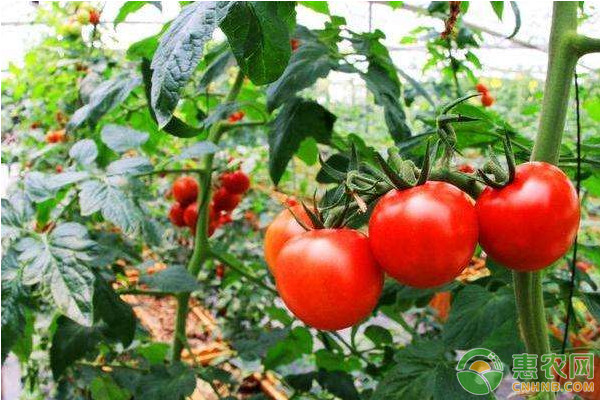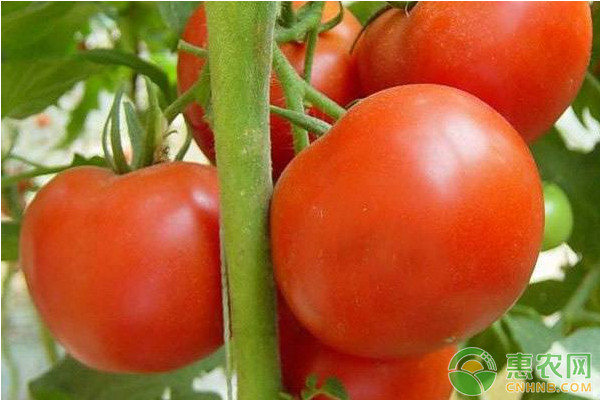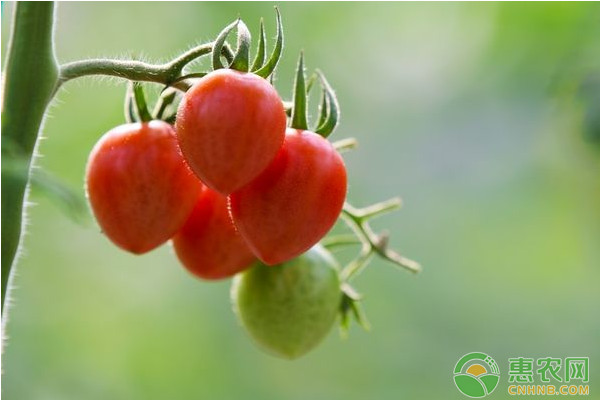How to grow tomatoes in the north? What are the criteria for tomato cultivation in the north? The following small series will come to talk to you about how to plant and treat pests and diseases in the north.

Tied up
After the tomato is planted, it should be framed in time. It can be used with bamboo rafts or tree strips with a length of 1.6 to 1.8 m and a thick index finger. It is inserted into the groove side of the plant 8 to 10 cm, and is connected in parallel to form a high "human" frame. When the plants are grown to a certain height, the vines are tied with strips or plastic ropes to ensure that the tomato plants grow up normally.
2. Pruning
Pruning is an important technical measure to artificially adjust the vegetative growth and reproductive growth of plants. In autumn, the tomato usually adopts double dry pruning method, that is, in addition to the main trunk, one of the strongest lateral buds in the lower part of the first inflorescence is left, and the resulting side branches are formed, and all other leaf buds are removed. The plant growth status can be observed and the topping is timely. When the lateral buds are about 3.3cm long, they should be removed in time. It is not good for plant growth and development too early or too late. It is not suitable to pick up buds on rainy days to prevent infection.
3. Fertilization and irrigation
The fertilization method can be applied between deep lines or acupoints. When the amount of organic fertilizer is large, it can be deep and wide in the middle of the plane, and each groove is 13 to 17 cm. After the fertilizer is applied, the organic fertilizer is filled and the soil is covered with soil. When the organic fertilizer is less and fine, it is better. Using acupoint application, that is, according to the specifications of 1 compartment and 2 rows and 0.4mm pitch, use the iron shovel to dig into the fertilization point of 13~17cm deep, first sprinkle the fertilizer, then apply the organic fertilizer, and plant the organic fertilizer and soil properly. After mixing, the seedlings are planted next to the acupoints. Tomato topdressing is better with quick-acting fertilizers such as pig manure, compound fertilizer and urea. The topdressing should be carried out according to the weather and the conditions of the seedlings. The dry weather should be dilutely applied, and it can be appropriately applied after the rain or before the irrigation. It is also necessary to grasp the principle of light weight before and after weighting, that is, lightly applying seedling fertilizer before fruit setting, especially to control nitrogen fertilizer, and the fertilizer should be regularly applied during the expansion period and harvesting period. When the first fruit walnut is large, it needs to be watered and topdressed, and the soil is often kept moist. It is necessary to carry out the work of inserting vines and cultivating soil in time. In the case of continuous dry weather, it should be timely flooded and drought-proof. The irrigation should adopt the method of dip irrigation with small water flow ditch. Do not flood the surface of the water. It should be watered at night to avoid damage to the roots. After irrigation, pay attention to the release of wind and humidity to reduce the occurrence of diseases.

4. Temperature control
In the flowering period of tomatoes, the suitable temperature is 25 ~ 30 ° C during the day, 20 ~ 15 ° C at night, below 15 ° C or above 35 ° C, are easy to cause falling flowers or physiological malformations. Therefore, if the temperature is too high, it should be shaded or increased during the day. The temperature is too low and the film should be covered at night. A suitable temperature difference between day and night is 12 to 20 °C.
5. Pest control
5.1 Leaf mold
When the fruit is affected, there are black spots with hard depression around the pedicle. The leaves have irregular yellow spots. When wet, brown mold layer is formed, which makes the leaves yellow, curled and then fall off. The cultivation of facilities is heavier. Before and after the onset, 70% mancozeb WP 500 times dilution, or 50% keering WP 800-1000 times dilution solution can be sprayed, sprayed once every 7 days, and sprayed 3 to 4 times.
5.2 Bacterial wilt
Generally, the disease begins from the fruit setting period, wilting at noon, returning to normal in the evening, and dying after 2 to 3 days, the white bacterium can flow out through the diseased stem. It can be sprayed with 25% DT wettable powder 600 times dilution solution, or 200mg/L agricultural streptomycin can be used for rooting, 0.5kg per plant, 7d perfusion, and continuous irrigation for 3~4 times.
5.3 Early blight
After the onset of the disease, the leaf mask has concentric striate lesions, dark brown and watery. Stems and petioles, fruits, etc. also have concentric ring-shaped lesions after onset, and there are black molds on the lesions when wet. Before and after the onset, 70% mancozeb WP 500 times dilution, or 75% chlorothalonil WP 400 times dilution solution can be sprayed, sprayed once every 7 days, and sprayed 3 to 4 times.
5.4 Late blight
The affected petiole and main stem are dark brown rot, the seedlings are wilting, the lesions start from the tip of the leaf tip, there is white mildew when wet, dry and dry when dry, the lesions turn from dark to dark brown, water stain or cloud , slightly sunken, the disease is hard. At the time of onset, 40% Phytophthora WP can be sprayed with 300-400 times dilution, and sprayed once every 7 days. It can also be controlled by dust method, that is, spray 5% chlorothalonil complex powder with a harvest type 10 duster, spray 15kg/hm2 each time, spray in the evening.
5.5 Gray mold
During the flowering period, 0.1% 50% keering WP or 50% phlegm WP can be added to the scented liquid, and the effect is very good. It is also possible to spray the fruit, but care should be taken to rotate the drug to prevent the bacteria from developing resistance. It is also possible to use 50% gram of dust and spray 15kg/hm2.

5.6 Virus disease
In the early stage of the disease, 20% virus A wettable powder 500 times dilution solution, or potassium permanganate 1000 times dilution solution can be sprayed, and sprayed once every 7 days, and even sprayed 2 to 3 times.
5.7 spot blight
The leaves are water-stained when the disease occurs, the lesions are nearly round, the center is grayish white, the edges are dark brown, slightly concave, such as fish-like shape, and later scattered black dots, easy to perforate. Petiole, stem and fruit can be scattered with small black spots. In the early stage of the disease, it can be sprayed with 70% of mancozeb WP 500 times diluted solution or 50% of carbendazim WP 500 times diluted solution, sprayed once every 7 days, and sprayed 3 to 4 times.
5.8 Pests
There are mainly cotton bollworms and aphids. Helicoverpa armigera should be sprayed with Dr. insecticide, chlorpyrifos and other high-efficiency, low-toxicity, low-residue insecticides every 5 to 7 days during flowering, and often replaced and applied. The mites can be killed by anti-Suiwei and Diguo spray.
The above is the whole content of northern tomato cultivation and pest control technology. Welcome all the needy farmers to come to Huinong.com to learn more. You can download the mobile Huinong app anytime, anywhere.
Neonatal Phototherapy Eye Mask
Neonatal Phototherapy Eye Mask,Phototherapy Eye Mask,Baby Eye Therapy Mask,Newborn Eye Mask
Wenzhou Celecare Medical Instruments Co.,Ltd , https://www.wzcelecare.com